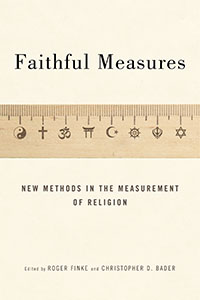
British sociologist Grace Davie presents an extended essay on local and global developments in British religion in the online report Religion in Public Life: Leveling the Ground. Presented as a series of lectures at the University of Birmingham and published by the think tank Theos, the 100-page report starts with her region of Exeter and the Southwest of England and the diminishing role of the churches in rural areas. While religious vitality was once more associated with the countryside than the city, Davies show how this has reversed in the case to such cities as London and their flourishing religious environments (from megachurches catering to immigrants to the renewal of cathedral life). Davie still holds to her theory of churches serving as public utilities (providing services in times of national crises), but she also sees British religion as a marketplace where the monopoly of the Church of England has lost its hold among the public. Other sections include a preview of the International Panel on Social Progress, an initiative that brings together more than 200 experts to weigh in a wide range of issues including religion, and a brief and critical discussion about Brexit and the election of Donald Trump. The report can be downloaded at: https://www.theosthinktank.co.uk/cmsfiles/Reportfiles/RELIGION.PDF
The second-generation Mar Thoma members have been heavily influenced by non-denominational evangelical these modernizing changes. She traces this dynamic to the influence (financial and otherwise) that first generation of immigrants still hold in the transnational church body. Kurien also looks at the rise of new charismatic church networks, several formed in the U.S. and how that adds to the way globalization moves in many directions.
While the contributors find that new methods face institutional resistance and high costs, such new and promising areas as “big data” and other technology that catches individual behavior and attitudes without self-reporting will necessarily change the field. Noteworthy chapters include William Sims Bainbridge’s study of how the unobtrusive nature of Internet research, such as genealogy and Google Book sites that produces innovative insights on the organizational history of communal religious groups, such as the Oneida community. Additional chapters go deeper into how big data research sites like Google Books and Amazon, is particularly suitable in understanding how non-institutional spirituality, such as the varieties of belief in the paranormal, can be charted by studying book purchasing networks. A chapter by Christopher Scheitle looks at how ordinary sources of content, such as congregational web sites and databases of patents and trademarks, can be turned into useful data. A contribution by sociologist Bradley Wright and colleagues explore the use of cell phones apps that measure and record emotional states while subjects go about everyday spiritual and religious practices.
Today, three main factions can be identified. The first one is a racial-religious current, basing its religion on the biological concept of race and advocating race purity. The second one is “ethnicist,” with an emphasis on cultural essentialism—seen as immutable and homogeneous—but without conceptualizing the heritage in exclusively biological terms. The third one is “a-racist (but not engaging actively against racism), refusing to conflate biological heritage and religion, and “generally inclusive of individuals of all background.” This 400-page long book traces the roots of modern Asatru in the search for a national ideology of European romanticism, and subsequently the search for a German religion by rejecting central components of Christianity. The encounter with modern occultism also gave roots to a racial version known as Ariosophy. Those groups failed to receive much recognition from the National Socialist regime, but their race-based views and legacies suffered from the general discrediting of such views after WW II. While there were limited attempts at a revival, it was only in the 1970s that such groups started to attract again a younger membership, helped by the more general interest for alternative religious paths and the growth in popularity of other modern expressions of Paganism.
There were also efforts from the early 1970s in Iceland by people who apparently had no rightist political backgrounds and developed Asatru on different basis. In Sweden, Schnurbein shows interactions during the same period with life reform movements as well as with neo-Shamanic networks. The Internet has facilitated a rapid internationalization of the movement. But it had already started earlier, as evidenced by the creation of groups in the USA (e.g. the Asatru Free Assembly). The developments from the 1990s onward are marked by a quest for respectability by large segments of German Neopaganism, even if it is difficult to uphold a strict demarcation between a-racist and other varieties, Schnurbein stresses.The book offers chapters on the beliefs and practices of Asatru as well as on the debates regarding the “hot questions” and the issues of gender and sexuality. There is also an interesting chapter on the relations between Germanic Neopaganism and academia, and the use of scholarly resources, as well as another chapter for attempting to apply the concept of “art-religion” (aesthetic dimensions). While Schnurbein acknowledges the real transformations in Asatru (as well as the fact that her own publications have contributed to critical self-reflections in some segments of the community), she concludes that the discourse on Germanic myth “has always been dependent on the idea of national, racial, or ethnic essences.” She deems it impossible to get completely rid of “essentialist operations.” For those reasons, “an elective affinity between this discourse on Nordic myth and right-wing thought is always immanent.”